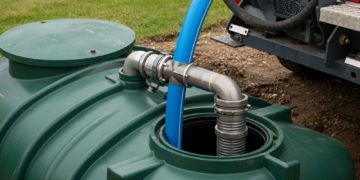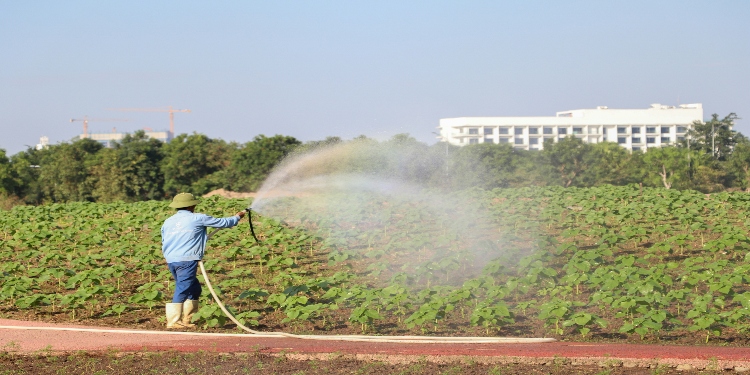If you’ve ever stood in your garden after a heavy downpour and watched water pool around your trees, you’ll know that too much of a good thing can be… well, not so good. That’s where irrigation management comes in. And no, it’s not just for farmers or massive estates—it’s a game-changer for local tree care, landscaping, and environmental sustainability.
In this article, we’ll unpack how efficient irrigation isn’t just about saving water—it’s about protecting ecosystems, improving soil health, and even reducing your carbon footprint. Whether you’re a homeowner with a few trees or a commercial property manager overseeing green spaces, this is something worth paying attention to.
What Is Irrigation Management, Really?
Let’s start with the basics. Irrigation management is the process of controlling when, where, and how much water is applied to plants, trees, and soil. It’s not just about turning on a hose or setting a sprinkler timer. It’s about understanding the needs of your landscape and using water wisely.
For tree services, this means knowing the root depth of different species, how soil types affect water retention, and how to avoid overwatering (which can be just as damaging as drought).
Why It Matters for the Environment
You might be thinking, “It’s just water—how bad can it be?” But inefficient irrigation can lead to a whole host of environmental issues:
- Water waste through runoff and evaporation
- Soil erosion and nutrient leaching
- Increased energy use from over-pumping
- Chemical runoff into local waterways
Efficient irrigation management flips the script. It turns water from a potential problem into a powerful tool for environmental good.
1. Water Conservation: Less Waste, More Impact
Let’s start with the obvious one—saving water. In the UK, we’re not immune to droughts. Just ask any landscaper who worked through the summer of 2022. Efficient irrigation systems like drip lines or smart controllers can reduce water use by up to 50% compared to traditional methods.
One of our clients, a local school in Surrey, switched to a weather-based irrigation system for their tree-lined campus. Not only did they cut their water bill in half, but they also noticed healthier trees and fewer pest issues. Turns out, trees don’t love soggy roots.
2. Healthier Soil = Healthier Trees
Overwatering doesn’t just waste water—it suffocates soil. When soil stays too wet, it loses oxygen, which is essential for root health. Efficient irrigation keeps moisture levels balanced, which:
- Encourages deeper root growth
- Reduces soil compaction
- Maintains microbial activity
We’ve seen this firsthand in commercial properties where compacted soil was causing tree stress. After switching to a regulated irrigation schedule, the soil structure improved, and the trees bounced back within a season.
3. Reduced Runoff and Pollution
Here’s where it gets interesting. When you over-irrigate, water doesn’t just disappear—it runs off into storm drains, carrying fertilisers, pesticides, and other nasties with it. This can pollute rivers, lakes, and groundwater.
Efficient irrigation minimises this by applying water slowly and directly to the root zone. Less runoff means fewer pollutants entering the environment. It’s a small change with a big ripple effect.
4. Energy Efficiency and Lower Emissions
Most irrigation systems rely on pumps, which use electricity or fuel. The more water you use, the more energy you burn. By reducing water usage, you also reduce energy consumption—and that means fewer greenhouse gas emissions.
One of our commercial clients in Oxfordshire installed a solar-powered drip system for their tree nursery. Not only did it slash their energy costs, but it also aligned with their sustainability goals. Win-win.
5. Supporting Biodiversity
Efficient irrigation helps maintain a balanced ecosystem. When trees and plants get just the right amount of water, they’re less prone to disease and pests. That means fewer chemicals are needed, which is great news for pollinators, birds, and beneficial insects.
We’ve worked with a community garden in Kent that saw a noticeable increase in bee activity after switching to a low-flow irrigation system. Healthier plants = more flowers = more pollinators. It’s all connected.
6. Resilience to Climate Change
As weather patterns become more unpredictable, irrigation management becomes a form of climate adaptation. Smart systems can adjust watering schedules based on rainfall, temperature, and humidity. This helps trees and landscapes survive heatwaves, droughts, and sudden downpours.
Think of it as giving your landscape a buffer against climate extremes. And in a country where we can go from hosepipe bans to flash floods in a matter of weeks, that’s no small thing.
7. Better Tree Growth and Longevity
Trees are long-term investments. Whether it’s a mature oak in a public park or a row of ornamental cherries along a driveway, proper irrigation extends their lifespan and improves their structure.
We’ve seen trees that were struggling for years suddenly thrive after a simple change in watering habits. It’s not magic—it’s just good management.
8. Cost Savings for Property Owners
Let’s not forget the financial side. Efficient irrigation reduces water bills, lowers maintenance costs, and prevents expensive tree removals due to root rot or disease. For commercial clients, it also boosts curb appeal and property value.
One estate manager we worked with in Hertfordshire told us their new irrigation setup paid for itself in under a year—just from reduced water usage and fewer callouts for tree issues.
How to Implement Efficient Irrigation Management
If you’re thinking, “This all sounds great, but where do I start?”—don’t worry. Here’s a quick roadmap:
✅ Assess Your Landscape
Understand your soil type, tree species, and sun exposure. Clay holds water longer than sandy soil, for example.
✅ Choose the Right System
Drip irrigation is ideal for trees and shrubs. Smart controllers can adjust watering based on weather data.
✅ Monitor and Adjust
Check soil moisture regularly. Use mulch to retain moisture and reduce evaporation.
✅ Work with Professionals
A tree services company (like yours truly) can design and install a system tailored to your property’s needs.
Final Thoughts: Small Changes, Big Impact
Efficient irrigation management isn’t just a buzzword—it’s a practical, proven way to the environment management. Whether you’re managing a single garden or a sprawling commercial site, the benefits are clear: healthier landscapes, lower costs, and a lighter environmental footprint.
Sources:
- AgLand Implement – Environmental Benefits of Efficient Irrigation
- Rain Bird – How Smart Irrigation Helps Save the Planet
- Client case studies and field experience from UK-based tree service providers (anonymised for privacy)
- DEFRA and Environment Agency guidelines on water use and landscape management (2024)












































































